|
|
| |
UNITED KINGDOM
BATH
Bath is a historic Roman and Georgian spa city. It is a World Heritage Site, situated 100 miles west of London and 15 miles (25 km) south-east of the nearest big city, Bristol. A unique city, Bath is famous for its hot springs, Roman period baths, Medieval heritage and stately Georgian architecture. They built baths and a temple on the surrounding hills of Bath in the valley of the River Avon around hot springs. The city has a variety of theatres, museums, and other cultural and sporting venues, which have helped to make it a major centre for tourism, with over one million staying visitors and 3.8 million day visitors to the city each year. The city has two universities and several schools and colleges. There is a large service sector, and growing information and communication technologies and creative industries, providing employment for the population of Bath and the surrounding area.
Bath Spa is a Victorian station on the Great Western Railway designed by Isambard Kingdom Brunel. The station is located in the city centre. It has regular inter-city and regional train services from Bristol, London, Reading, Salisbury, Southampton, Weymouth and Swindon. From London, you should travel from London Paddington station, trains run approx every 30 minutes, journey time about 1 hour 30 minutes. Train times (from any location) can be found on the National Rail Planner.
 The Roman Baths (Thermae) of Bath
Photograph © Diliff
The Roman Baths complex is a site of historical interest in the English city of Bath. The house is a well-preserved Roman site for public bathing. The Roman Baths themselves are below the modern street level. There are four main features: the Sacred Spring, the Roman Temple, the Roman Bath House and the Museum holding finds from Roman Bath. The buildings above street level date from the 19th century. The Baths are a major tourist attraction and, together with the Grand Pump Room, receive more than one million visitors a year. The museum houses artefacts from the Roman period including objects which were thrown into the Sacred Spring, presumably as offerings to the goddess. These include more than 12,000 Roman currency coins which is the largest collective votive deposit known from Britain. A gilt bronze head of the goddess Sulis Minerva, which was discovered nearby in 1727, is displayed. Also on display are the remains of the elaborate hypocaust heating system which served the sweat rooms.
 Bath Abbey, view from the North East
Photograph ©
Steve Cadman
The Abbey Church of Saint Peter and Saint Paul, Bath, commonly known as Bath Abbey, is an Anglican parish church and a former Benedictine monastery in Bath. The church is cruciform in plan, and is able to seat 1200. An active place of worship, with hundreds of congregation members and hundreds of thousands of visitors each year, it is used for religious services, secular civic ceremonies, concerts and lectures. The choir performs in the abbey and elsewhere. There is a heritage museum in the vaults. The abbey is a Grade I listed building, particularly noted for its fan vaulting ceiling. It contains war memorials for the local population and monuments to several notable people, in the form of wall and floor plaques and commemorative stained glass. The church has two organs and a peal of ten bells. The west front includes sculptures of angels climbing to heaven on two stone ladders.
The Royal Crescent
The Royal Crescent is a magnificent semi-eliptical crescent of houses designed by John Wood and completed in 1774. This was the first of Bath's eight crescents, and its shape remains unique. You can visit one of the houses which has been redecorated to resemble what it would have been like at the end of the 18th century. The houses have been home to various notable people for over 200 years. Changes have been made to the interiors; however, the facade remains much as it was when it was built. The Royal Crescent now includes a hotel and museum with some of the houses being converted into flats and offices. The buildings have been used as a location for several films and television programmes.

Royal Crescent, Bath
Photograph ©
Arpingstone
Bath's parks are ideal for a summer picnic although local by-laws prevent the drinking of alcohol outdoors. Parade Gardens is located in the heart of the city overlooking the river, this is where the locals come to laze away the afternoon. There is a small entrance charge for visitors but it is free to residents. Victoria Park is Bath's largest park in front of the Royal Crescent. Ideal for ball games or feeding the ducks. Entrance is free. The Botanical Gardens in the north-western corner of the park make for a pleasant wander.

Parade Gardens in Bath
Photograph ©
DiliffGreat Pulteney Street
Great Pulteney Street is a grand thoroughfare that connects Bathwick on the east of the River Avon with the City of Bath. At over 1,000 feet (300 m) long and 100 feet (30 m) wide, the road itself is the widest and grandest in Bath. The architect only constructed the façade though - developers acquired plots and built the actual structures behind. This means that, although obviously similar, many of the properties have different internal features, and some large stretches were used to build hotels. Famous former residents of the street have included the novelist Jane Austen and the anti-slavery campaigner William Wilberforce. Numbers 1 to 7 were a single government office, now designated as a Grade I listed building.Numbers 41A and 42 to 77 have also been Grade I listed.
Tours
There are numerous guided tours, walking tours, and audio tours of the city available. Options range for historical tours to ghost tours to pub crawls; you will find leaflets for these in most hotels, bars, and restaurants. Bath also makes a great base for day trips to the surrounding countryside. There are also tours that go to Stonehenge and places like Avebury, the village of Lacock, Castlecombe, and other surrounding villages throughout the Cotswolds. Just go to Tourist Information next to the Abbey for brochures or to book a tour.
Theatre
The historic Theatre Royal in the Sawclose, near the city centre, opened in 1805. It offers a rich programme of drama and other entertainment throughout the year, ranging from traditional pantomime at Christmas to Ayckbourn, folk singers, opera and Shakespeare. Programmes in the past few years have included a summer season mounted by the distinguished director Peter Hall. In addition to the main house, the Theatre Royal has two smaller performance spaces - the Ustinov Studio and a (very) new theatre for children, the Egg - and three restaurants, The Vaults, the 1805 Rooms and the Egg Café.
 Holborne Museum of Art
Photograph ©
Daniel Moden
The Fashion Museum (known before 2007 as the Museum of Costume) is housed in the Assembly Rooms in Bath. The collection was started by Doris Langley Moore, who gave her collection to the city of Bath in 1963. It focuses on fashionable dress for men, women and children from the late 16th century to the present day and has more than 30,000 objects.The earliest pieces are embroidered shirts and gloves from about 1600.
Holburne Museum of Art
The Holburne Museum of Art is in Sydney Pleasure Gardens, Sydney Place, in the Bathwick area of Bath. The building was originally designed as the Sydney Hotel, and was built by Charles Harcourt Masters in 1795–6. The Holburne Museum houses the art collection formed by Sir (Thomas) William Holburne, (1793-1874), including silver, Old Master paintings, Italian bronzes such as the Susioni once owned by king Louis XIV, maiolica, porcelain, glass, furniture and portrait miniatures. These have been added to with examples of landscapes by Francesco Guardi and J. M. W. Turner, and portraits by George Stubbs, Allan Ramsay, Johann Zoffany and Thomas Gainsborough. The museum also owns portraits by modern artists such as David Fisher, who won the Museum's 2008 competition for a commissioned portrait.
 Pulteney Bridge
Photograph © MichaelMaggsPulteney Bridge
Pulteney Bridge is a bridge that crosses the River Avon, in Bath, England. It was completed in 1773 and is designated by English Heritage as a grade I listed building. In 1936 the bridge became scheduled as a national monument, with plans being made for the restoration of the original façade. The restoration was completed in time for the Festival of Britain in 1951,with further work being carried out in 1975.It is now one of the best-known buildings in a city famed for its Georgian architecture.
Golf clubs
Bath Golf Club is an excellent, free draining hilltop course. Not overly long but a good challenge for the mid-handicapper. Always in great condition. Located at Sham Castle, near Bath University. Tracey Park Golf Club has an appealing 27 hole parkland course between Bath and Wick (Bristol). The Crown course is superior to the Cromwell course, which has some newish holes. Lansdown Golf Club has a narrow fairway and Entry Hill is a municipal nince hole learner course and has superb views over Bath.
|
|
|
Events
Bonfire Night
5 November
On 5th November 1605, soldiers discovered a man called Guy Fawkes in a cellar under the Houses of Parliament. With him were at least twenty barrels of gunpowder. Guy Fawkes was arrested and tortured. At last he gave way and told his torturers about a plot to blow up Parliament together with the king, James I, his ministers and Members of Parliament.
In 1606 Parliament agreed to make 5th November a day of public thanksgiving and ever since then the day has been celebrated with fireworks and bonfires.
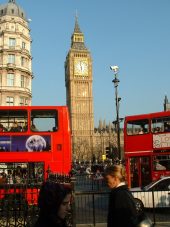
The Clock Tower
Photo: PKG
Chelsea Flower Show
May
Chelsea Flower Show is the world's most popular and renowned flower show. The best in gardening and horticulture is brought together in one place for one week in May.
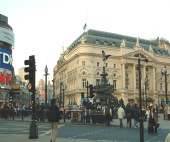 Piccadilly Circus
Photo: PKG
Edinburgh International Festival
August
Each year the Edinburgh International Festival stages one of the greatest celebrations of the arts, attracting audiences from around the world to the city's thrilling atmosphere. The festivities offer a unique opportunity to experience the excitement of live performance by internationally renowned artists as well as the joy of discovering new and unfamiliar works.
 St. James Park
Photo: PKG
Henley Royal Regatta
June
Henley Regatta was first held in 1839. Originally staged by the Mayor and people of Henley as a public attraction with a fair and other amusements, the emphasis rapidly changed so that competitive amateur rowing became its main purpose.
 Horse Guards Parade
Photo: PKG
London Film Festival
November
With a host of gala screenings, special events, The Guardian Interviews, and UK, European and World Premieres, the British Film Institute's London Film Festival is the leading non-competitive event in the international cinema calendar.
 Kenwood House
Photo: PKG
London International Boat Show
January
The London Boat Show is a glittering affair, with all the best in boating on display. London's Earls Court houses the international boat show with all the latest in boats, equipment, watersports and holidays.
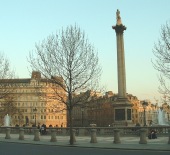 Trafalgar Square
Photo: PKG
London Marathon
April
Aside from being a natural arena for competitiveness and human achievement, the London Marathon is a huge asset to thousands of charities who enter athletes in the hope of raising money, usually on a sponsorship basis.
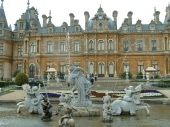 Waddesdon Manor
Photo: PKG
Notting Hill Carnival
August
Every August Bank Holiday the Notting Hill Carnival brings London alive. The festival began as West Indian immigrants moved into the area during the fifties and is now one of the best carnivals in the UK attracting over a million people each year. The first carnival was in 1964, and grew up from the struggle between the black West Indian community and the police. Today the carnival celebrates the diverse cultures which make up Britain's identity.
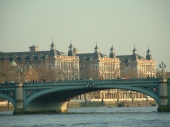 Westminster Bridge
Photo: PKG
Royal Welsh Show
July
This is the flagship show for WCC members. Held in the South Glamorgan Hall, which is situated close to some of the main entrances to the showground, it is also near to the livestock and show rings which attract many thousands of visitors.
 London
Photo: PKG
Southampton International Boat Show
September
The biggest and best of the season's boats is on display, as well as the latest in sailing wear, equipment and great holiday offers.
 Green Park
Photo: PKG
State Opening of Parliament
November
The Queen formally opens the new session of Parliament each year. Accompanied by the Duke of Edinburgh she travels in the State Coach to the Palace of Westminster. Before the royal procession sets out, a detachment of the Yeomen of the Guard (dating from 1485, they are the oldest of the royal bodyguards) search the cellars of the Houses of Parliament. This tradition dates back to the Gunpowder Plot of 1605, when Guy Fawkes was arrested whilst preparing to blow up Parliament. Today the Yeomen are reinforced by police in their search.
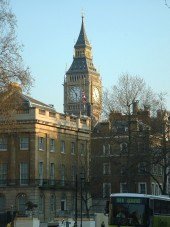 The Clock Tower
Photo: PKG
|





